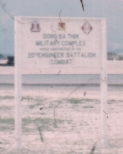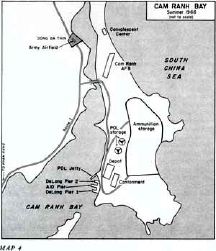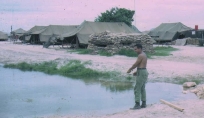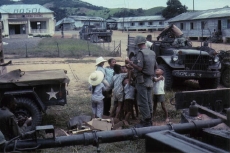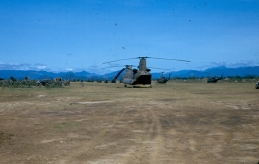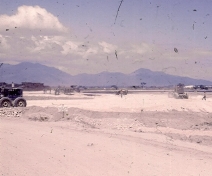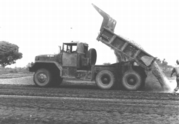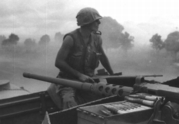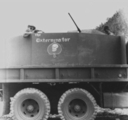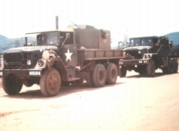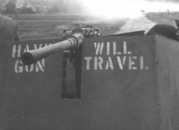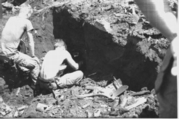

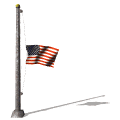
Vietnam Casualties
Memorial Page
 In the fall of 1965, under the command of Lt. Col. Richard L. Harris, the 20th Engineer Battalion was alerted for deployment to the Republic of Vietnam. On 5 December 1965, the battalion's equipment was loaded on the
USNS Lt. James E. Robinson at the Boston Army Terminal. On 14 December, an advance party of the battalion left Fort Devens on C-130 aircraft and arrived in Vietnam on 18 December. The balance of personnel were flown to Oakland, California, where they boarded the
USNS William Wiegel and sailed for Vietnam on 9 December.
In the fall of 1965, under the command of Lt. Col. Richard L. Harris, the 20th Engineer Battalion was alerted for deployment to the Republic of Vietnam. On 5 December 1965, the battalion's equipment was loaded on the
USNS Lt. James E. Robinson at the Boston Army Terminal. On 14 December, an advance party of the battalion left Fort Devens on C-130 aircraft and arrived in Vietnam on 18 December. The balance of personnel were flown to Oakland, California, where they boarded the
USNS William Wiegel and sailed for Vietnam on 9 December.
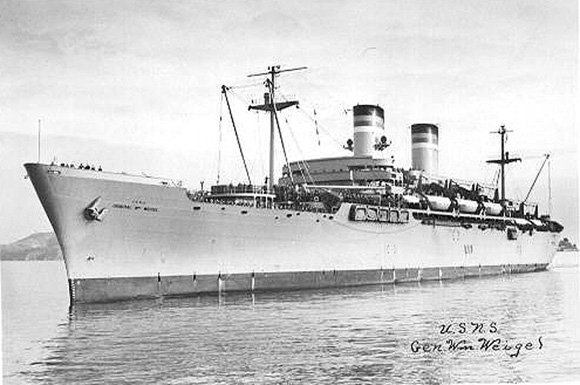
USNS General William Weigel
On the first day of January 1966, the battalion arrived at Cam Ranh Bay, Vietnam. The battalion was initially assigned to the 35th Engineer Group at Dong Ba Thin, site of the Army airfield associated with Cam Ranh Bay. The 513th Engineer Company (Dump Truck) and 584th Engineer Company (Light Equipment) were attached to the battalion the entire time it was at Dong Ba Thin. By May of 1966 the 20th Engineers with its attached units had graded the aviation cantonment area, built seventy-five aircraft parking pads, finished a cargo plane parking area, and begun construction of a taxiway to the completed runway.
The battalion moved from Ninh Hoa to Ban Me Thuot on 5 October 1966, then shortly thereafter moved on to Pleiku [map, photos, memoirs] as part of the 45th Engineer Group. On 10 November 1966, it was placed under the 937th Engineer Group, 18th Engineer Brigade, under which it served for most of the war.
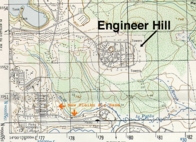 Pleiku area and Engineer Hill |
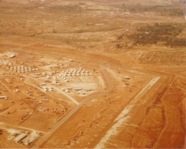 Aerial photo of Engineer Hill |
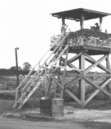 Guard Tower on Perimeter of Engr Hill |
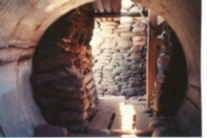 Bunker in HHC Co Area, Engr Hill |
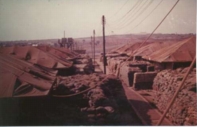 "Sandbag City" on Engineer Hill |
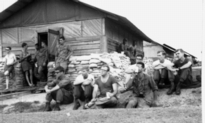 Hanging Out in the HHC Co Area |
The 20th Engineer Battalion (Combat) was equipped to perform forward area construction, obstacle preparation, demolition work and fighting as infantry. It provided all non-divisional engineer support in its area and served as a local construction agency for all projects (especially base construction), upgrading land lines of communication, and airfield construction and rehabilitation. The battalion was organized with an HHC and 4 line companies, A through D, with a typical authorized strength of 812 men.


See more Vietnam photos. Click on the left photo to see a short note and great photos covering September 1968 to November 1969, from Ronnie Rutledge. Click on the right photo for images of soldiers and the Pleiku area during the period 1969-1970, from Bill Hall.
The 20th Engineers constructed a US Special Forces/Civilian Irregular Defense Group Camp (Tieu Atar) beginning in December 1967 and concluding in March 1968.
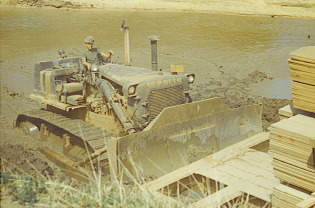
|
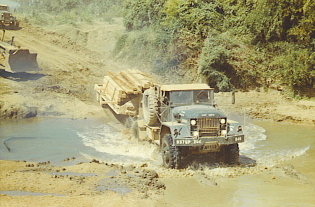
|
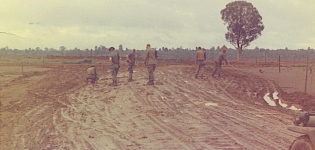
|
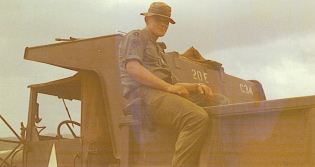
|
This is a picture of SP4 Bliss next to the smaller "War Wagon," a 3/4 ton truck with an M60 machine gun. The other photos are of the War Wagon mounting a .50cal machine gun on a 2-1/2 ton truck; taken at Camp Enari, 1968-1969.
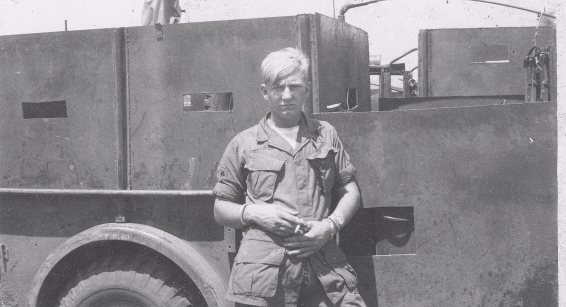
|
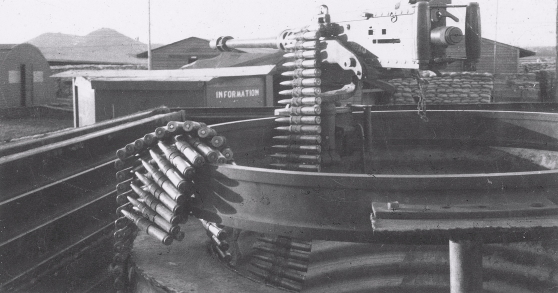
|
|
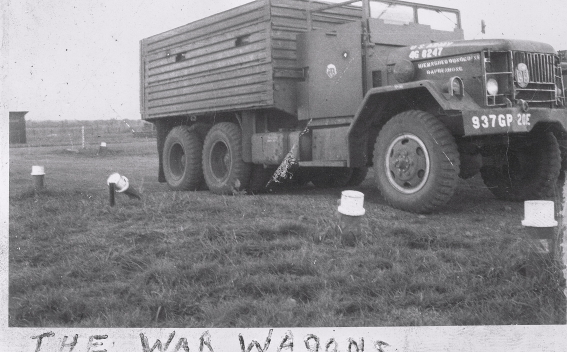
|
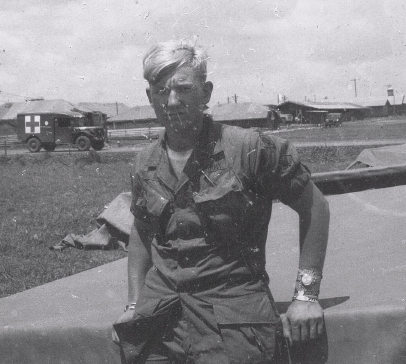
|
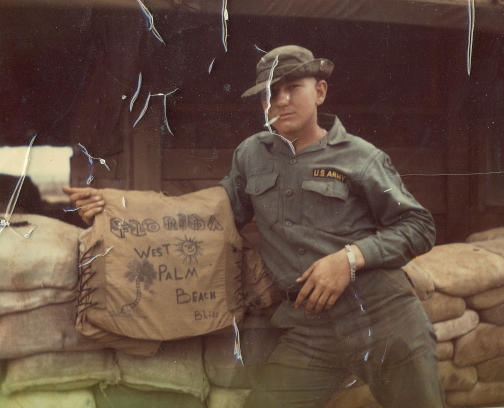
|
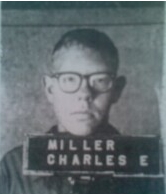
Charles Miller served in Company B, 20th Engineers in Vietnam from 1969 to 1970. Click his basic training photo, at left, to see documents from his tour of duty with the battalion, to include his service in the painting of the Engineer Hill dispensary.
Death of Battalion Commander
On 12 May 1970 while on an inspection tour, the battalion commander, LTC Fred V Cole, was killed when his helicopter was shot down near Pleiku. See his memorial information on the Vietnam Veterans Memorial.
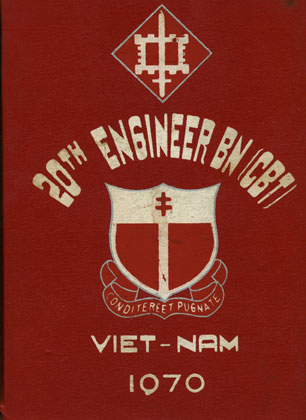
The 20th Engineers produced a "yearbook" for 1970. Click on the photo above to browse the book.
Included are hundreds of photos of 20th Engineer soldiers, facilities, and activities.
Counteroffensive, Phase VII, 1 July 1970 - 30 June 1971
Fighting continued in Cambodia during early February before and after South Vietnam began its U.S.-aided drive in Laos. Lam Son 719, the most significant operation during this campaign, was conducted out of I Corps by Vietnamese troops with US fire and air support. Their object was to cut the Ho Chi Minh Trail and to destroy enemy bases at Techepone, Laos. The operation consisted of four phases. In Phase I, called Operation DEWEY CANYON II, the 1st Brigade, US 5th Infantry Division (Mechanized) occupied the Khe Sanh area and cleared Route No. 9 up to the Laotian border. In the meantime, the US 101st Airborne Division conducted diversionary operations in the A Shau Valley. The US 45th Engineer Group, with the 20th Engineer Battalion, had the mission of repairing Route No. 9 up to the Laotian border. This lasted from 30 January to 7 February 1971.
In Vietnam the 20th Engineers participated in 14 campaigns:
Defense
Counteroffensive
Counteroffensive, Phase II
Counteroffensive, Phase III
Tet Counteroffensive
Counteroffensive, Phase IV
Counteroffensive, Phase V
Counteroffensive, Phase VI
Tet 69/Counteroffensive
Summer-Fall 1969
Winter-Spring 1970
Sanctuary Counteroffensive
Counteroffensive, Phase VII
Consolidation I
While in Vietnam, the battalion earned three Meritorious Unit Citations (with streamers embroidered Vietnam 1966-1967, Vietnam 1967-1968, and Vietnam 1968-1969, respectively) and HHC earned the Republic of Vietnam Civil Action Honor Medal, First Class (streamer embroidered Vietnam 1970-1971).


Specialized engineer units, such as land clearing teams, dump truck companies, and construction support companies, were often attached or task organized to the 20th Engineers; for example, in 1970, attached units included the 509th Engineer Company (Panel Bridge), 538th Engineer Company (Land Clearing) [formerly the 35th Engineer Team (Land Clearing)] and 584th Engineer Company (Light Equipment).
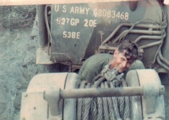 D7 Dozer of the 538th Land Clearing Company. |
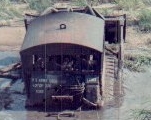 One of the 538th's Dozers Stuck in the Mud |
 Project-Site Hooch for 538th LCC. |
 538th LCC Project |
The battalion was posted to the 35th Engineer Group at Cam Ranh Bay for departure from Vietnam on 31 August 1971, enroute to Fort Campbell, Kentucky.
- Lieutenant Colonel Richard L. Harris, 16 December 1965-13 July 1966
- Lieutenant Colonel Robert L. Gilmore, 14 July 1966-5 July 1967
- Lieutenant Colonel James H. Phillips, 31 January 1968-25 February 1968
- Lieutenant Colonel Maurice H. Leiser, 25 February 1968-29 September 1968
- Lieutenant Colonel John F. Wall, Jr., 11 October 1968-19 June 1969
- Lieutenant Colonel Morris L. Gardner, 23 June 1969-12 January 1970
- Lieutenant Colonel Fred V. Cole, 13 January 1970-12 May 1970 (KIA)
- Lieutenant Colonel Richard T. Robinson, 24 May 1970-6 December 1970
- Lieutenant Colonel Richard L. Curl, December 1970 - May 1971
